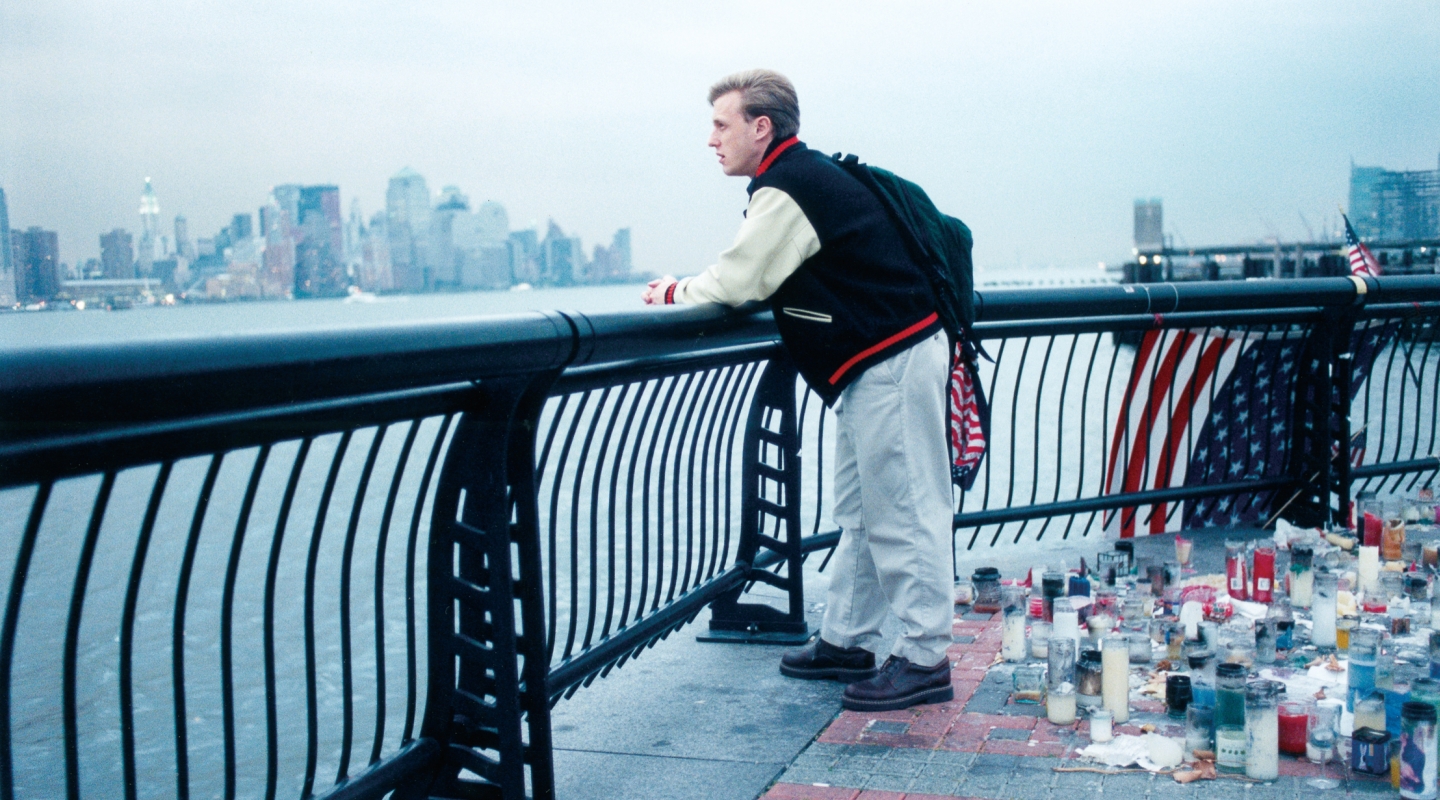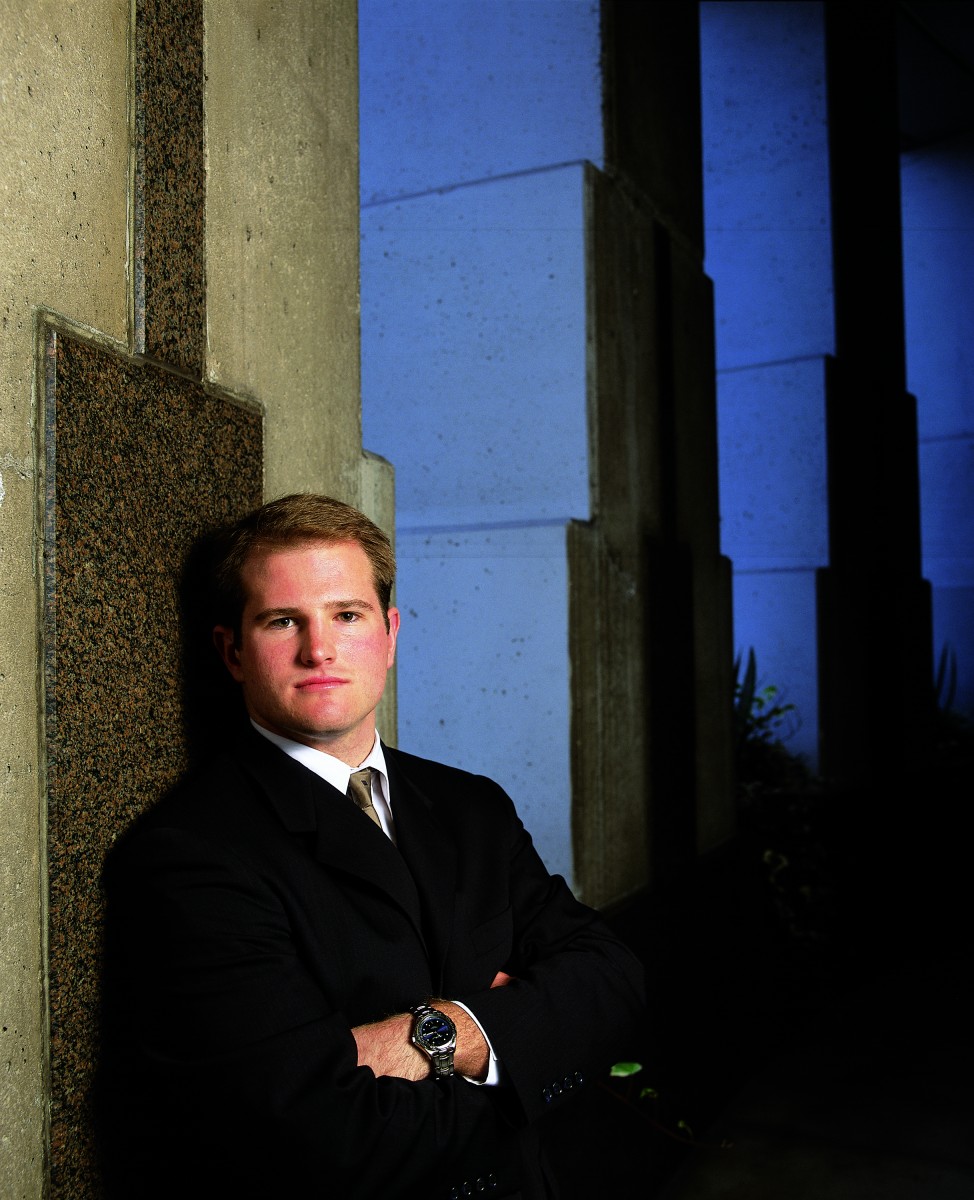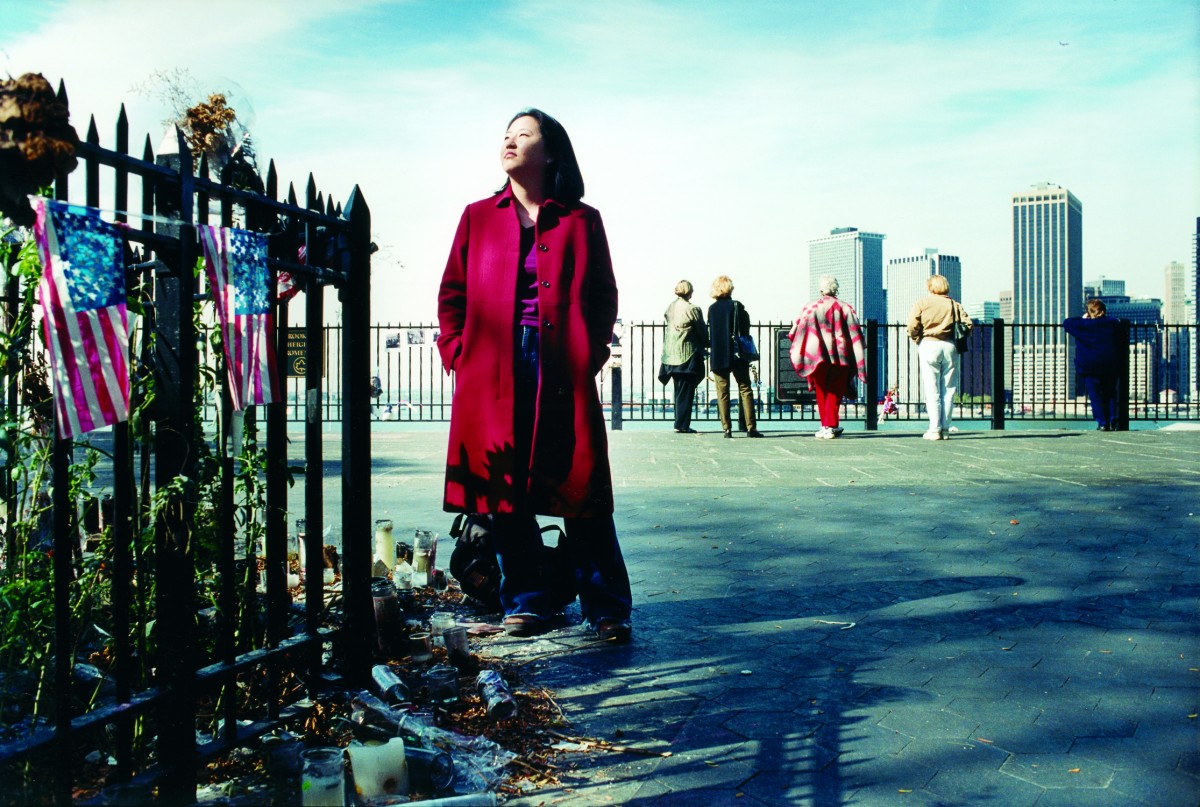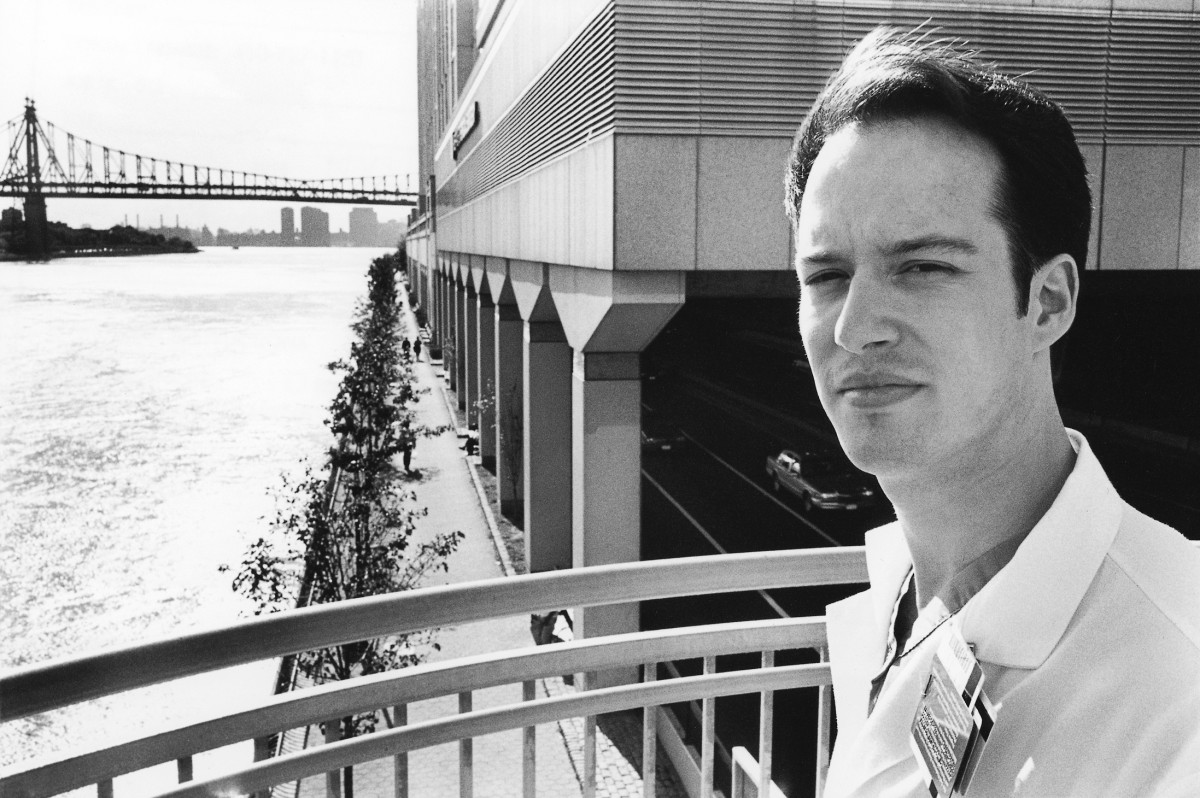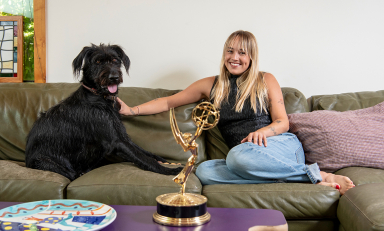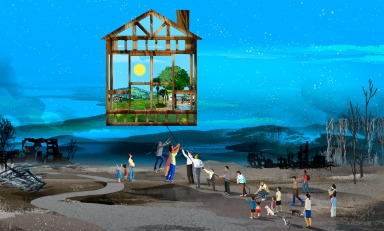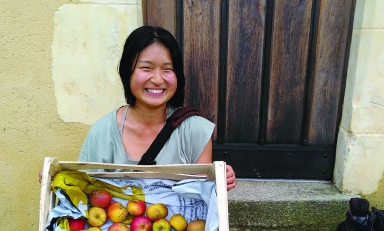From Winter 2002: The horror, the heroes, and the hole in the sky: Seven Oxy alumni share their tales of the city on 9/11
At 8:45 a.m. on Sept. 11, 2001, Kevin Danni ’01 was one of hundreds of Morgan Stanley financial adviser trainees breaking for coffee on the 61st floor of the World Trade Center’s south tower. It was the politics graduate’s second day in New York, and he used his vantage point to gaze over the city he was visiting for the first time. Approaching the tower’s plate glass windows, he was surprised to see bits of paper blowing by. “My first instinct was, I thought there was a parade,” Danni says. “I thought it was confetti. As I got to the window, I started seeing balls of fire. Then I looked up and said, ‘Oh, my God.’” The north tower was on fire.
Danni spent the next 20 minutes running down flights of stairs in what he describes as “orderly chaos” with other WTC occupants. By the 15th floor, the stairwells were filling with smoke that had traveled down elevator shafts. By the 10th floor, Danni encountered a silent column of close to 50 hose-toting firefighters making their way upstairs. “They were so intent on getting to the flames, you could just see it on their faces,” says Danni, who was 10 blocks away when the tower collapsed—30 minutes after his escape. Miraculously, all 285 Morgan Stanley trainees made it to safety.
“It seems like the whole world is going nuts.”
One block north of the Twin Towers, paralegal specialist Jean Won ’01 was girding for a long day with the U.S. Attorney’s Office. New York City’s mayoral primary was under way, and Won—who was assigned to field voter complaint calls in the U.S. Attorney’s civil rights unit—arrived at work an hour earlier than normal on September 11, taking a PATH commuter train from her Jersey City, N.J., home to the World Trade Center’s convenient basement station. Won had been in her 18th-floor office for 45 minutes when the walls shook.
High-heeled shoes littered the roadway as women ditched their pumps to flee the danger. Won helped one bleeding woman find shelter in a doorway, walked briskly for 30 minutes, and arrived in Soho with shin splints around the time the north tower crumbled. A chunk of the jetliner’s engine was later found on the roof of the U.S. Attorney’s Office.
“It seems like the whole world is going nuts,” says Won, who can’t believe her own good fortune that day. “Had I gone in at my normal time, I would have been down in the WTC basement when that first plane hit. Someone was looking out for me.”
“All I could hear was my heart pounding. I was focused on getting out.”
Fifteen minutes into his second day of work with American Express’s strategic planning division on West Street, Derek Leonard ’96 felt an explosion that sounded like a sonic boom: “It went right through my chest—a big pulse.” Across the street he saw smoke, fire, and a gaping hole in the north tower of the World Trade Center. What could have happened? Leonard asked himself. Is the building going to fall down on me like a tree? “Most of us were standing there asking if this could really be happening.”
Security told all employees to remain in place. After the second explosion, Leonard and his fellow workers decided to leave, “no matter what security was saying,” he says. “There was no value in staying around.”
Outside, debris was falling. Documents and rolls of toilet paper settled among shards of burned glass and metal. Leonard watched a charred body fall out of the black void of one of the burning towers. “That’s probably the image I’m trying to get rid of,” he says. “It was hard to take my eyes off of it.” Running alongside thousands of other workers (“like the New York City Marathon”), Leonard fled to escape the carnage. “All I could hear was my heart pounding. I was in harm’s way and had to get back to my wife. I didn’t even look back. At that point I was focused on getting out.”
Leonard called his wife, Alexis Kays ’96, after the first explosion, but wouldn’t speak to her again until 90 minutes after the second plane struck, because cell phone service was down. As dusty workers walked out of Lower Manhattan along the West Side Highway that night, Leonard took an unusually quiet ferry ride across the Hudson River to his home in Jersey City. On arrival, he was sprayed down to wash away potential asbestos fibers.
Coincidentally, Leonard had spent the previous weekend in Manhattan admiring the skyline. On Saturday, September 8, he and Alexis watched a ballet performance in the plaza adjoining the towers. Today, Leonard doesn’t want to work in a tall building and he’s troubled by the sound of jetliners. Meanwhile, New York casts a painfully different shadow. “The sky is empty,” he says. “There’s a hole.”
“People jumped. Buildings collapsed. I turned away and cried.”
Weeks after the terrorist attacks on the World Trade Center, Ben Swire ’95 still expects the worst when he hears the roar of jet engines above. “I don’t look up,” he says. “I just wait a beat for an impact.” Swire, an English and comparative literary studies major, was on his way to his marketing job at Morgan Stanley when United Flight 175 plowed into the World Trade Center’s south tower. The impact pierced the 70th floor—Swire’s floor. Had he not been out late the night before at a birthday party, Swire knows, the story would be different. “I woke up and ended up listening to NPR for an extra five, 10 minutes.”
Swire was inside the building en route to his office when the north tower was struck. He saw the explosion, then watched as the scene grew increasingly nightmarish. Helpless workers tried to climb down the towers but fell because there was nothing to cling to. As the fire continued to rage, Swire witnessed six people—all holding hands—jump to their deaths. “It was stunning, it was baffling. I noticed three hours later that that whole morning I had my hand over my mouth.”
Swire lost more than his partially completed dissertation in the tragedy; he also lost a co-worker who was a close friend. Feeling a need to help, Swire cooked food for support crews manning a Manhattan ice rink that was being used as a morgue. Now that streets have been reopened in portions of the city, Swire misses the quiet of residents walking the streets exchanging salutations in hushed tones.
As days go on, he still struggles to talk about what happened that day. “I’ve been on emotional autopilot the last few weeks. My own descriptions of what happened and how I’m feeling have been strictly fact-oriented—I stood, I ran, I cried, people jumped, buildings collapsed, I turned away and cried more. For a while I haven’t really felt much on my own. I seem to be getting that from other people. They fill in the emotion for me that I can’t access on my own. They cry and it makes me cry. They feel sad and it lets me feel sad. Their stories, their pictures, their terror, their loss—that gets to me. But I have nothing on my own. I’m still a bit shut down in here.”
“It’s easy to forget how much you can help people.”
Seventy blocks from the World Trade Center, Dr. Ricardo Gonzalez ’94 was treating patients in New York Presbyterian Hospital’s urology clinic on the morning of September 11. When he first got word of the attack from a teary-eyed nurse, Gonzalez and dozens of other doctors suspended their schedules. “Instinctively, I went down to the emergency room, where just about every physician in the hospital was,” he says. Hallways became general supply areas and each bed in the ER had been readied with ventilators, monitors, and numbered packets to mark unidentifiable patients. An hour passed and few victims arrived. Gonzalez, an Oxy psychobiology major who graduated from Stanford Medical School, then made his way to the hospital’s burn ward, the largest and best equipped unit in the country. There was no shortage of activity there.
He checked pulses every 15 minutes. The injuries were massive: burned eyes, seared lungs, nerve damage. Two of his patients died before Gonzalez finished his 24-hour shift, half of which he spent in the burn ward. “I can’t help but wonder, if I was in their situation, whether I would rather expire or live with the definite limitations that they will have,” he says. “It’s sad, but unless we know what a patient’s desire is, it’s our obligation to do as much as possible to help them live.”
Everyone, from doctors to nurses to custodians, made an extra effort that day. “It was one of the most coordinated orchestrations of people that I could have ever imagined at such a big institution,” Gonzalez says. “Every single person was willing to help. Even the patients who were feeling well enough were volunteering to go home to be treated for their illnesses. It’s easy to forget how much you can help people and the kind of impact you can have during times of crisis.”
“I was trying to convince myself that what I was seeing wasn’t real.”
A rush of heat hit the back of Sam Kang ’01’s neck as he emerged from the red line subway at Chambers Street in Lower Manhattan. United Flight 175, the second hijacked airliner, had just struck the south tower of the World Trade Center. A Coro fellow who arrived in New York in mid-August to begin a nine-month study of how the city conducts business in a social, political, and economic context, Kang was beginning his first day of work at the New York City Department of Health’s needle exchange program. When he arrived at the department, the doors were locked. Kang then saw a caravan of fire engines and ambulances making their way to the Twin Towers several blocks away. “That’s when I realized there was something terribly wrong,” he says. “I turned around and quickly got back on the subway to get back home.”
But before boarding his train, Kang turned his head and caught a horrifying glimpse of the Twin Towers’ upper stories. “I could see people waving what looked like white shirts and white flags,” he says. “I think I was trying to convince myself that what I was seeing wasn’t real. I don’t think that image or what happened to those people has really sunk in, even now.”
Instead of working at the needle exchange program, Kang was reassigned to the Red Cross’ New York headquarters in Brooklyn. “There are new jobs, new tasks, and new needs that come up every hour,” he says. “Right now we’re all focused on disaster relief.” Among those Kang worked to help are undocumented immigrants who work in Lower Manhattan as custodians and restaurant workers, many of whom are out of jobs because of the tragedies. “A lot of them are afraid to seek assistance, even though Red Cross policy does not give any regard to documentation status,” he says. “A lot of people don’t know that. We’re trying to find a way to do some outreach.” That means working closely with ethnic community groups to spread the word that help is available.
One World Trade Center employee came in and explained that he lost 12 friends in the tragedy. Suddenly without work, he also lost all means to pay his mortgage or provide for his wife, two children, and 96-year-old mother. The Red Cross gave him a list of community resources that Kang helped to compile. “I was overwhelmed that the document that I helped create had helped thousands of people,” he says. Kang often finished a day emotionally drained, albeit empowered: “It seems like we’re much more needed than I previously thought.”
“It was hard to look down and not be horrified.”
Betina Pavri ’89’s first view of the devastation visited on New York came from 12,500 feet in the air. After getting extraordinary flight clearance from the Federal Aviation Administration, Pavri, an experiment coordinator at Pasadena’s Jet Propulsion Laboratory, and a team of two pilots and an instrument engineer circled the rubble September 16 in a turbo-prop Twin Otter equipped to measure potential asbestos contamination. The state-of-the-art AVIRIS sensor, designed in the 1980s to conduct remote sensing in space, also used its infrared capabilities to help locate hot spots for firefighters on the ground. From the air, the ruins were no less wrenching. “You could smell a really acrid smoke that stuck in the back of your throat,” Pavri says. “It was hard to look down and not be horrified. I hope to never see anything remotely like it again.”
From September 16-23, Pavri and her team flew four aerial surveys lasting two hours each, making some passes as low as 6,500 feet. The team typically maps toxic waste flows for geological and ecological studies, and on September 11, Pavri and her colleagues were in Atlanta conducting research for the Environmental Protection Agency. After the attacks, Pavri’s airplane was grounded along with the rest of the country’s commercial and private air fleets. That was until the Federal Emergency Management Agency negotiated with the FAA to fly the AVIRIS team to New York. Pavri operated the 1,000-pound device, which peers out of the bottom of the airplane and collects its data from reflected sunlight.
“We all felt honored to be able to do something to help rather than feel helpless and angry and sad,” she says. “It was our way of dealing with it and feeling like at least we were contributing something to make a difference.” Pavri and her colleagues stayed in Manhattan during their missions, which allowed them to view the devastation at ground level. At Union Square, the air was thick with the fragrance of burning candles that served as a memorial to the thousands of casualties. The façade of Saks Fifth Avenue, meanwhile, was draped in black and covered with American flags and floral arrangements. “Missing” posters were plastered wherever there was an open surface. “There was a strange mixture of people trying to get back to normal and signs that people weren’t getting back to normal,” Pavri says. “Everyone was looking for some way to process this.”
“I love New York and I love my job. There’s no other place I want to be.”
In the days preceding September 11, Jean Won ate bagel sandwiches and drank fresh-squeezed orange juice in the eateries housed on the World Trade Center’s plaza. Her new routine is anything but convenient. The U.S. Attorney’s Office has moved to temporary digs in Brooklyn, and Won’s 30-minute commute now takes an hour and a half. But the tragedy hasn’t deterred her. “I don’t know if I can ever necessarily accept what happened, but we have to go back to work and deal with it,” she says. “I love New York and I love my job. There’s no other place I want to be.”
After returning home to California, Kevin Danni, who works in Morgan Stanley’s Burbank office, visited South Pasadena firefighters and heaped praise on their profession. “I look at each day differently now,” Danni says. “Every day is a great day. I feel really blessed that I was able to come back and embrace my family. A lot of life’s little problems seem so minuscule now. I really do have such a new, positive outlook. I wake up and think, ‘How can I not give 110 percent today?’ It’s not even a question.”
Originally published in Occidental magazine, Winter 2002. (Top photo: Derek Leonard '96 looks out onto the New York skyline in fall 2001.)

